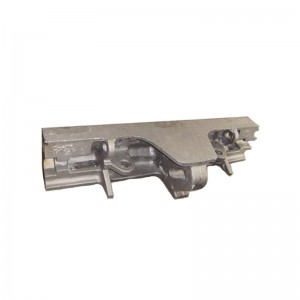- Afrikaans
- Albanian
- Amharic
- Arabic
- Armenian
- Azerbaijani
- Basque
- Belarusian
- Bengali
- Bosnian
- Bulgarian
- Catalan
- Cebuano
- China
- China (Taiwan)
- Corsican
- Croatian
- Czech
- Danish
- Dutch
- English
- Esperanto
- Estonian
- Finnish
- French
- Frisian
- Galician
- Georgian
- German
- Greek
- Gujarati
- Haitian Creole
- hausa
- hawaiian
- Hebrew
- Hindi
- Miao
- Hungarian
- Icelandic
- igbo
- Indonesian
- irish
- Italian
- Japanese
- Javanese
- Kannada
- kazakh
- Khmer
- Rwandese
- Korean
- Kurdish
- Kyrgyz
- Lao
- Latin
- Latvian
- Lithuanian
- Luxembourgish
- Macedonian
- Malgashi
- Malay
- Malayalam
- Maltese
- Maori
- Marathi
- Mongolian
- Myanmar
- Nepali
- Norwegian
- Norwegian
- Occitan
- Pashto
- Persian
- Polish
- Portuguese
- Punjabi
- Romanian
- Russian
- Samoan
- Scottish Gaelic
- Serbian
- Sesotho
- Shona
- Sindhi
- Sinhala
- Slovak
- Slovenian
- Somali
- Spanish
- Sundanese
- Swahili
- Swedish
- Tagalog
- Tajik
- Tamil
- Tatar
- Telugu
- Thai
- Turkish
- Turkmen
- Ukrainian
- Urdu
- Uighur
- Uzbek
- Vietnamese
- Welsh
- Bantu
- Yiddish
- Yoruba
- Zulu
stu . 10, 2024 19:02 Back to list
Designing an Innovative Heat Exchanger for Enhanced Plant Growth in Factories
The Role of Cast Si-Al Heat Exchangers in Plant Growth Factories
In the rapidly evolving world of agriculture and horticulture, plant growth factories – or vertical farms – are garnering increasing attention for their ability to produce high yields in controlled environments. Efficient temperature management is crucial in these setups, and one innovative solution that is gaining prominence is the use of cast Si-Al (silicon-aluminum) heat exchangers. This article explores the functionality and benefits of these heat exchangers in enhancing plant growth while advancing sustainability in agricultural production.
Understanding Heat Exchangers
To appreciate the significance of cast Si-Al heat exchangers, it is essential to understand the basic functioning of heat exchangers. These devices facilitate the transfer of heat between two or more fluids without mixing them, promoting energy efficiency and temperature regulation. In plant growth factories, maintaining optimal temperature levels is vital for plant health, photosynthesis, and growth rates. The role of heat exchangers becomes crucial in managing the thermal environment, especially in energy-intensive operations like indoor farming.
The Advantages of Cast Si-Al Heat Exchangers
1. Material Properties Si-Al alloys present a unique combination of strength, light weight, and corrosion resistance. This makes them highly suitable for heat exchange applications where durability and efficiency are paramount. Unlike traditional metal heat exchangers, cast Si-Al units can withstand higher temperatures and pressures, enhancing their longevity and reliability.
2. Enhanced Heat Transfer The structure of cast Si-Al alloys promotes improved thermal conductivity. This means that heat can be transferred more effectively between the fluids, leading to faster temperature adjustments within the growing environment. This rapid response is essential for adapting to the varying thermal needs of different plant species as well as fluctuations in external conditions.
3. Energy Efficiency Utilizing cast Si-Al heat exchangers can significantly reduce energy consumption in plant growth factories. By optimizing the heating and cooling processes, these devices can minimize the reliance on traditional heating and cooling systems. This is a critical consideration in an industry where operational costs can quickly add up due to energy demands.
cast si-al heat exchanger for plant growth factories

4. Sustainable Practices As the agricultural sector increasingly focuses on sustainability, the adoption of energy-efficient technologies is paramount. Cast Si-Al heat exchangers support this goal by reducing overall energy needs and thereby lowering carbon emissions. Furthermore, their longevity means less frequent replacement, contributing to reduced waste and resource consumption.
Application in Plant Growth Factories
In a typical plant growth factory, the atmosphere must be meticulously controlled. Factors such as humidity, temperature, and air circulation play pivotal roles in plant health. The integration of cast Si-Al heat exchangers facilitates better management of these elements. In particular
- Climate Control By efficiently transferring heat between the air and water systems used in vertical farms, these heat exchangers contribute to maintaining the ideal growing conditions. This is especially important during peak growth periods when plants require precise climate control.
- Water Heating In hydroponic systems, where plants grow in nutrient-enriched water, heating systems are often necessary to maintain ideal water temperatures. Cast Si-Al heat exchangers deliver reliable and efficient water heating solutions, enhancing plant growth rates and reducing energy usage.
- Airflow Regulation In conjunction with other temperature control systems, these heat exchangers help regulate airflow within the growth environment, ensuring that all plants receive adequate heat and nutrients.
Conclusion
As the demand for sustainable and efficient food production methods continues to rise, the role of advanced technologies like cast Si-Al heat exchangers in plant growth factories becomes ever more critical. By enhancing heat transfer efficiency, reducing energy consumption, and supporting sustainable practices, they represent a significant advancement in the quest for optimal agricultural outputs. This innovation not only benefits the growers by improving productivity and profitability but also contributes to a more sustainable future for our food systems. As vertical farming and plant growth factories become more mainstream, the integration of such technologies will inevitably shape the future of agriculture, maximizing output while minimizing environmental impact.
-
Precision Silica Sol Casting Solutions Custom & ODM Options
NewsJun.06,2025
-
Top Quality Steel Castings Manufacturer Wholesale Deals
NewsJun.06,2025
-
Custom Heat Exchangers for Low NOx Gas Boilers Cast Silico Al
NewsJun.06,2025
-
Custom Punch Concrete Pipe Mold Bottom Ring Precision & Durability
NewsJun.06,2025
-
Precision Water Glass Sand Casting Services Custom & Durable
NewsJun.06,2025
-
Precision nvestment Casting Parts Buy Custom Solutions
NewsJun.05,2025


